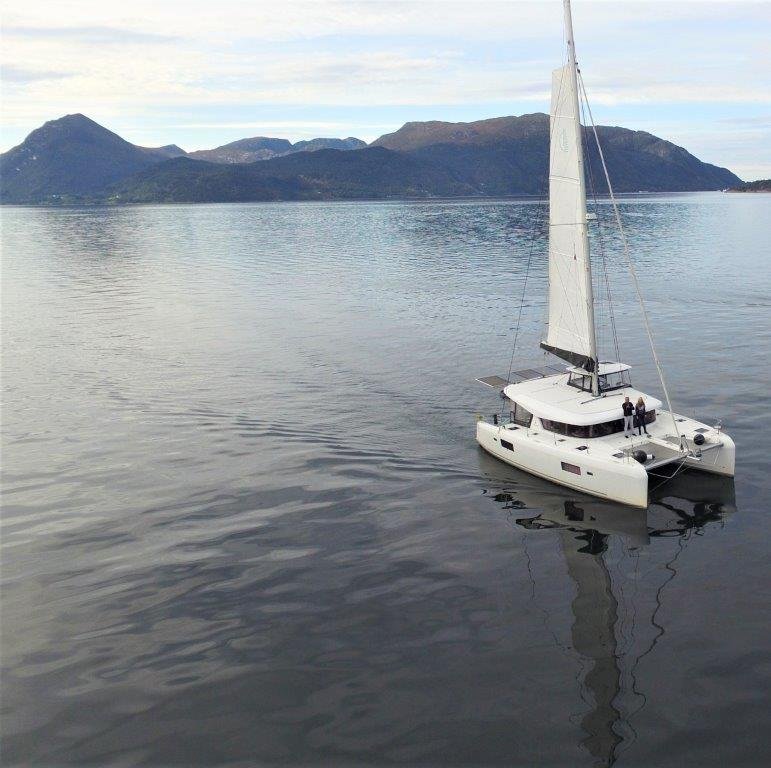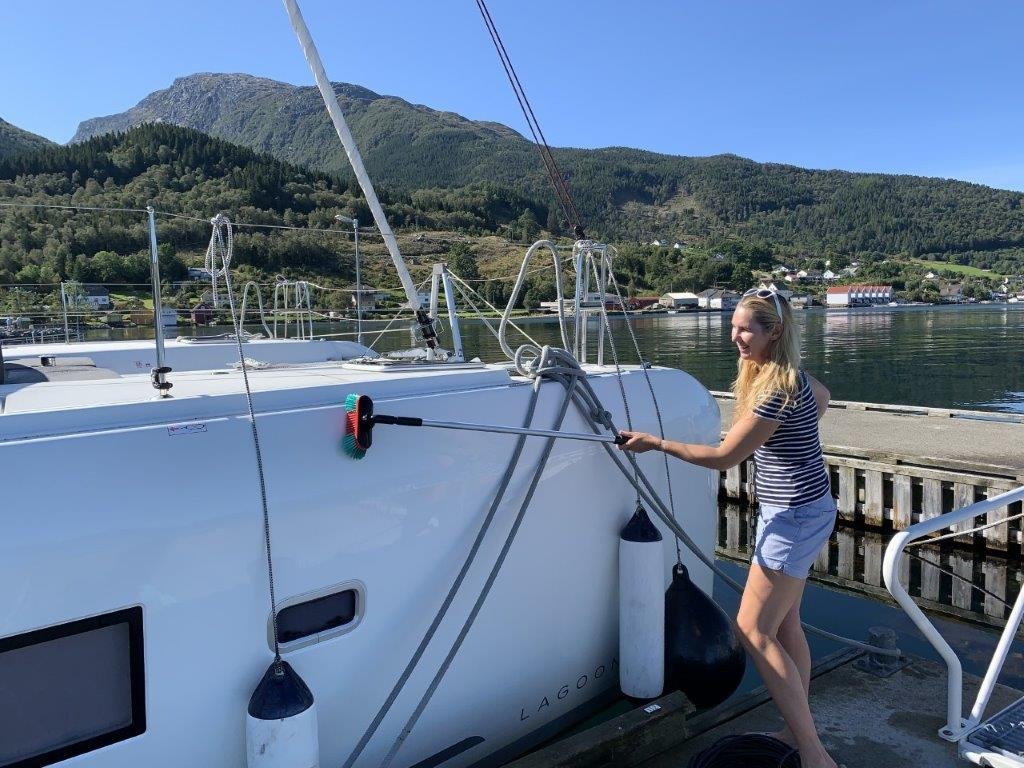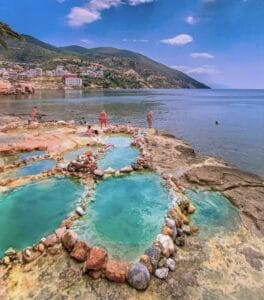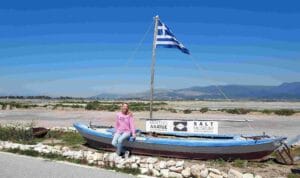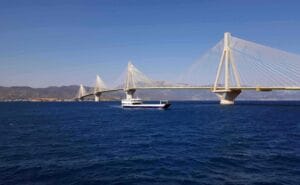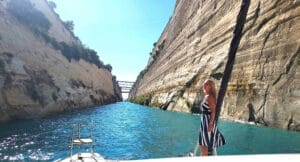We get many questions about our world trip by boat: ‘how did you chose this ship?’, ‘how long are you planning on sailing around the world’ or ‘ how do you finance your trip?’. We have answered the top 10 questions on our FAQ-page, but 1 question would take so many words to answer, we decided to write a blog about it: ‘what does a typical sailing day look like?’
Preparation
First, the preparation starts a day before the actual sailing day, because you have to find out if the conditions are ok to sail your ship out of the harbor, sailing along a coast to the place you have in mind (a village, anchor spot, bay or city marina). A ship is not a car 😊, you depend on nature when you use a ship as a means of transport, so you have to do some research on nature in that area!
The 5 topics we always have to look into are:
- Wind direction, you want the wind to blow into your sails, so if you want to sail south, the ideal wind is east, west or north. But wind coming from the south means sailing is not possible, you have to use your engines, going into the wind and waves (not comfortable). And the use of engines, sailors typically try to avoid.
- Wind force. If the wind direction is favorable, the ideal wind force is between at least 12 knots to maximum 20 knots. With our main sail out, combined with the jib, we can usually get to a speed of about half of the knots of the wind force. That is usually 7 or 8 knots of speed, which is 7 to 8 nautical miles, which is equal to about 12 kph.
- Current: the direction and force of the current determines the speed you can achieve by wind. Because if the current is going in the direction you are sailing, it’s in your favor. But if the current is flowing towards you and is strong, it can easily bring your speed down by the speed of the current.
- Tide: in certain parts of the world, you have to carefully check the tide to make sure the water is deep enough for you to sail through. And another point is to know about the direction of the current which is depending on the tide. Knowledge about ebb and flow, from start to finish is crucial. When we were sailing in Scandinavia, there was almost no tide. But in the UK, we have had many occasions where we had to wait to sail out of the harbor, because we had to have enough water under our keels (the draft of our ship is 1.30meter). Worst case scenario, you can end up with too little water under the keels which damages your boat seriously. Some harbors are even drying up, making the boats all stand on the soft mud. Some harbors have locks to keep the minimum depth of water always about 2 meters. But the doors of the lock usually open only above the 2 meters and are kept closed below 2 meters. So you have to calculate when to leave and when to arrive in the next harbor if that harbor has a lock as well.
- Port information: talking about locks at the entrance of harbors, this brings us to the last point: the specifics of the harbor. Especially if the difference in water level is 3 to 5 meters (Edinburgh!), you want to know if the harbor has floating pontoons, so your ship nicely rises and falls with the tide. You don’t even notice going up or down 5 meters being on your ship, if you didn’t look outside! But if a harbor doesn’t have a spot left on the pontoon or it is a fishing harbor, you can end up with your ship to stay next to a concrete quay wall, making long lines to moor your boat along the quay. This gives more risk of damaging your boat going up and down a couple of times a day. At least your fenders will get scratched with all the sharp shells being stuck on the walls. Other factors in the port being important: do they have electricity (220 volt), is there a fresh water supply, can they accommodate a ship of 8 meters wide in their harbor like our catamaran? Usually we call the port of arrival in advance to check about these specific facts.
If all 5 conditions are ok, you plan the route in the navigation system, we use B&G. It can plan the route automatically from start to finish. But you always have to check this route: are there bridges or electricity cables lower than our mast of 21 meters, are there submerged rocks or shipwrecks that we have to avoid, is there a shipping lane we have to follow or avoid? Is there a marine farm (= salmon cultivation) that we have to sail around, do we pass windmills or oil drilling platforms, etc? So the automatically planned route always has to be checked in detail to make sure we don’t end up in unpleasant surprises while sailing!
Start of the sailing day
Usually we get up 1 hour before leaving with our sailboat. We have this routine:
- Pay the harbor master for the days we have been in the harbor (about € 30 per day)
- Check if we have enough fresh water aboard, otherwise we have to fill our water tanks (max 600 liters)
- Disconnect the electric cable from the supply on the pontoon
- Turn on the 2 engines and let them warm up (at least 15 minutes before leaving)
- Unzip the lazy bag where the main sail is stored so we can raise the sail on open waters
- Turn on the Mari phone on the right channel
- Make sure the dinghy is secure at the back of the boat
- Have the binoculars ready
- When you leave in the dark, because the trip takes more hours than daylight is available, also keep a flashlight ready
During sailing
Then, after all this arranging and organizing, you can toss the lines and the fun begins! You leave the harbor motoring and when you are in open waters, you raise the sail(s) and enjoy your coffee or tea and relax. A catamaran is really comfortable sailing: all the lines, winches and sails can be operated from 1 sheltered space, the helm (= the seat with the steering wheel). You sometimes have to adjust the sails to the changing direction of the wind or the wind force, but usually that is not often. Or in case the wind drops below 14 knots and is blowing from the back of the boat, it becomes more efficient to lower the main sail and jib and unroll the Code Zero. This is the third and biggest sail we have aboard, it’s 100m2 and manages to get 2/3 speed out of the knots nature gives us. Up to 18 knots of wind the code zero can be used, and it makes the catamaran ‘fly’ sometimes up to 12 knots of speed over water!
A typical sail day is about 6 hours of sailing, this means we can bridge a distance of about 50 kilometers a day when sailing. We prepare and eat lunch (sandwiches, soup, omelet or a quiche) and with long sailing days (8 hours) we play some music or clean the boat a bit while sailing. Usually we both sit behind the steering wheel and chat a bit or look at the beautiful coastline, other ships, towns we pass or the movement of the water.
Arriving in the harbor
About 30 minutes before arriving in the harbor, we start the engines, lower the sails, put out the fenders, prepare the lines and call the harbormaster that we will be arriving. Sometimes the harbor master comes to the pontoon, and helps a bit with mooring the boat by catching the lines. When you are on a catamaran you can’t jump on the pontoon and tie up the boat, it’s 17.000 kilos! When the boat is safely moored, we connect to electricity, sometimes connect the water hose, we clean up everything and bring it inside the boat (binoculars, Mari phone, etc) and go to the harbormaster’s office to ‘register’ the boat with our contact information, fill in the forms and sometimes pay in advance. And back on the ship we toast to a safe and successful journey, having enjoyed the fresh air and great outdoors and then either go sightseeing, shopping or relaxing onboard.

